
Here's my latest column for the Charleston Gazette-Mail:
Sorghum isn’t easy to come by in West Virginia. But it wasn’t always like that.
The thick sweetener is derived from a cereal crop that was domesticated by Africa about 5,000 years ago and arrived in America with African slaves, according to Saveur Magazine.
The thick table syrup became the primary sweetener of southern kitchens, where it was considered an everyday staple at the end of the 19th century. During this time, sorghum production was at an all-time high — creating millions of gallons a year and much of it being used to help create rum and molasses beer in the north.
After World War II, cheap, refined sugar began to spread across the region and largely took the place of sorghum. Except in Appalachia — where its lifespan was extended in those more isolated rural areas.
Eventually, West Virginia, too, turned to the much cheaper sugar.
Today, sorghum production is far less common than using refined sugar. But, it can still be found in Kentucky and Tennessee. And, small-scale sorghum production is making a comeback in the Mountain State, too.
Family Roots Farm, based in Wellsburg (my hometown), is one of those working to revive this lost tradition with historical significance, along with Appalachian chefs looking to create dishes rooted in history and place.
In 2015, the family farm planted its first half acre of sorghum and extracted its natural juice. Typically, Family Roots Farm plants sorghum in late May or early June and harvests in late September or early October.
“Sorghum is a 100 percent natural sweetener and can be used to replace molasses, honey, or syrup in recipes. Sorghum is packed full of hard to find vitamins such as iron, potassium, and calcium,” according to the farm’s website. “Often people associate sorghum with molasses. However, molasses is a byproduct of the sugar industry whereas sorghum is the extracted juice from sorghum and boiled down.”
Sorghum and molasses have different origins: sorghum from Africa and molasses from the Caribbean. Sorghum syrup is made from the sorghum plant, which is extracted from stalks that are boiled down to leave a syrup behind, while molasses is a byproduct of processing sugar cane into sugar.
Not only is sorghum revival in Appalachia due in part to its ties to its deep tradition, but its flavor is unique.
The thick syrup has notes of dark caramel and smoky flavors. Some taste a bit of sourness or bitterness in the amber viscosity. It’s more commonly used as a syrup or an ingredient in sauces — whereas molasses tends to be used in baking.
Family Roots Farm suggests using its sorghum in baked beans, stir-fry or gingerbread, or with biscuits, pancakes and ice cream.
The Wellsburg farm is one of a growing number in the Mountain State working to carry on the tradition of sorghum production. It is a member of the National Sweet Sorghum Produce & Processors Associations, guaranteeing the farm creates a pure sorghum product.
This farm, and others, are preserving foodways that helped tie together communities — something so intrinsic to the fabric of Appalachia. Reviving this piece of food heritage in the Mountain State keeps our history alive.
We know sweet sorghum is a staple in our history — and soon it may once again be a staple in our pantries.

Known as Salem's artisan sandwich shop and beer bar, Gulu-Gulu Cafe was our last stop before leaving town.
 The space is neat, eclectic and cozy.
The space is neat, eclectic and cozy. The menu features items like hummus, mac & cheese, salads, sandwiches, sweet and savory crepes, and breakfast.
The menu features items like hummus, mac & cheese, salads, sandwiches, sweet and savory crepes, and breakfast.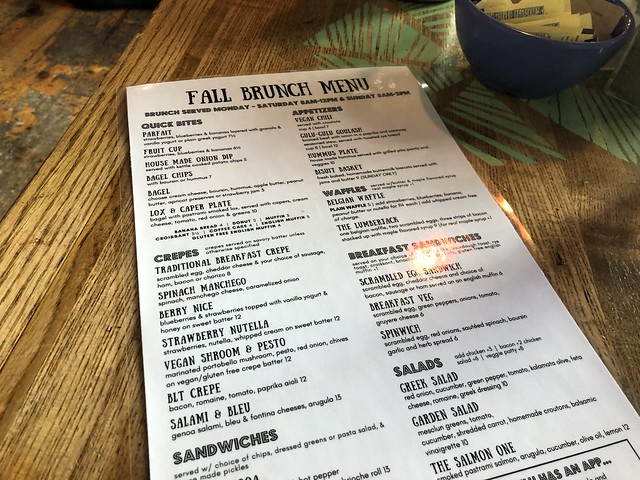 And I put in an order for my meal as I looked over the drink festival.
And I put in an order for my meal as I looked over the drink festival. This one caught my eye: John Denver's Breath - hot chocolate, trinity absinthe, whipped cream and cocoa.
This one caught my eye: John Denver's Breath - hot chocolate, trinity absinthe, whipped cream and cocoa. I have no idea why it's called that. If you have a clue, please let me know. But I had to try it.
I have no idea why it's called that. If you have a clue, please let me know. But I had to try it.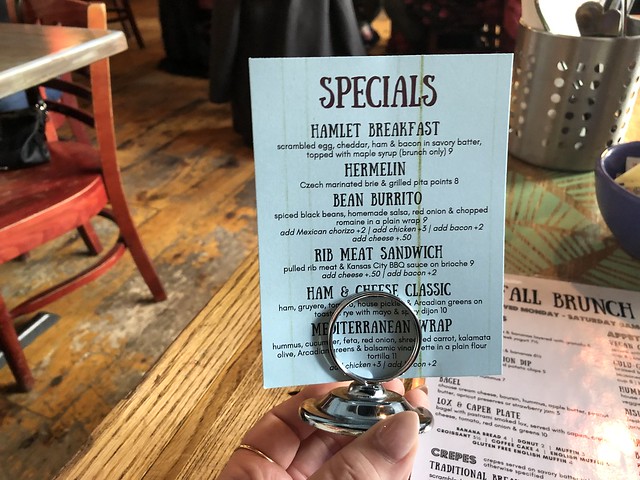 My entree came out - I got a lox bagel, which is one of my favorites.
My entree came out - I got a lox bagel, which is one of my favorites.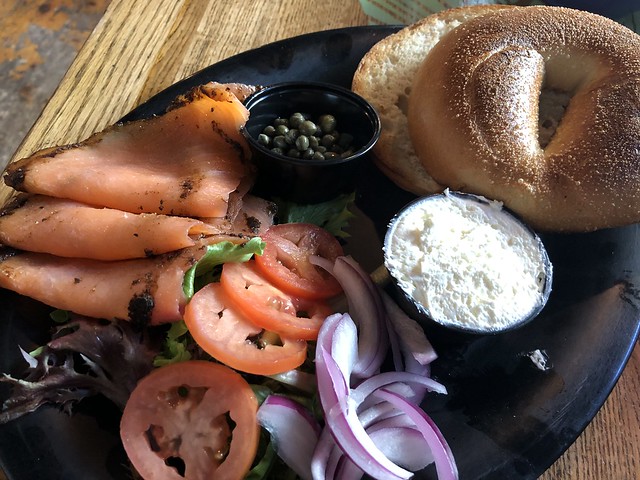 Have you been here?
Have you been here?
More than a year ago, I tried Country Road House and Berries' strawberry jam at the Capitol Market.
 It was delicious, and I always had strawberry picking there on my to-do list in the back of my mind.
It was delicious, and I always had strawberry picking there on my to-do list in the back of my mind.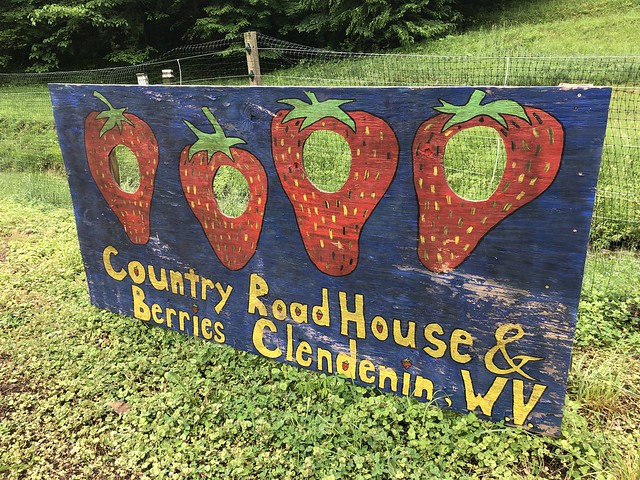 So when the newspaper published that the bed & breakfast is opening you-pick strawberries for the season, I headed up with my friend Sam to check it out.
So when the newspaper published that the bed & breakfast is opening you-pick strawberries for the season, I headed up with my friend Sam to check it out. It was a bit rainy on this day, but we had lots of fun making our way up the rows and finding little ripe treasures buried below leaves.
It was a bit rainy on this day, but we had lots of fun making our way up the rows and finding little ripe treasures buried below leaves. I left with a great bounty - more than I can eat in just a day or two - which is when they're best! Have you been yet?
I left with a great bounty - more than I can eat in just a day or two - which is when they're best! Have you been yet?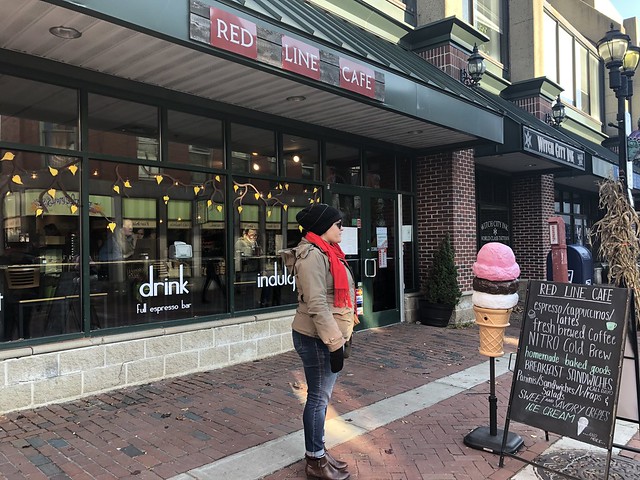
Red Line Cafe is a sweet cafe with coffee, breakfast and lunch - exactly what we needed on a chilly day.
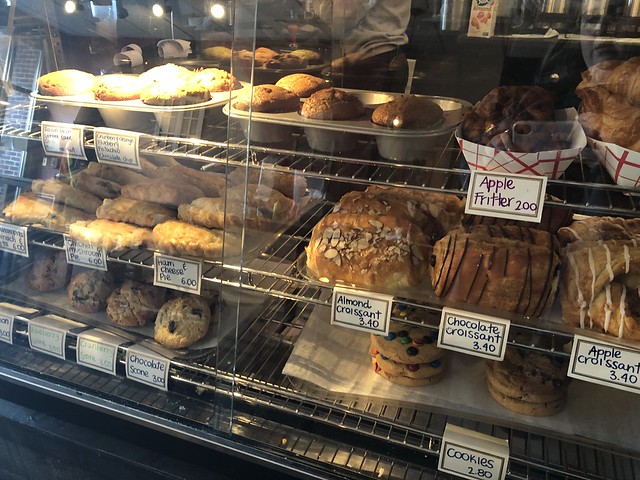 The pastry case was full of muffins, fritters, croissants and more.
The pastry case was full of muffins, fritters, croissants and more. I ordered a latte, as well as a muffin.
I ordered a latte, as well as a muffin. And, we took these to the window, sipped on our warm drink while people watching.
And, we took these to the window, sipped on our warm drink while people watching.
All work property of Candace Nelson. Powered by Blogger.






